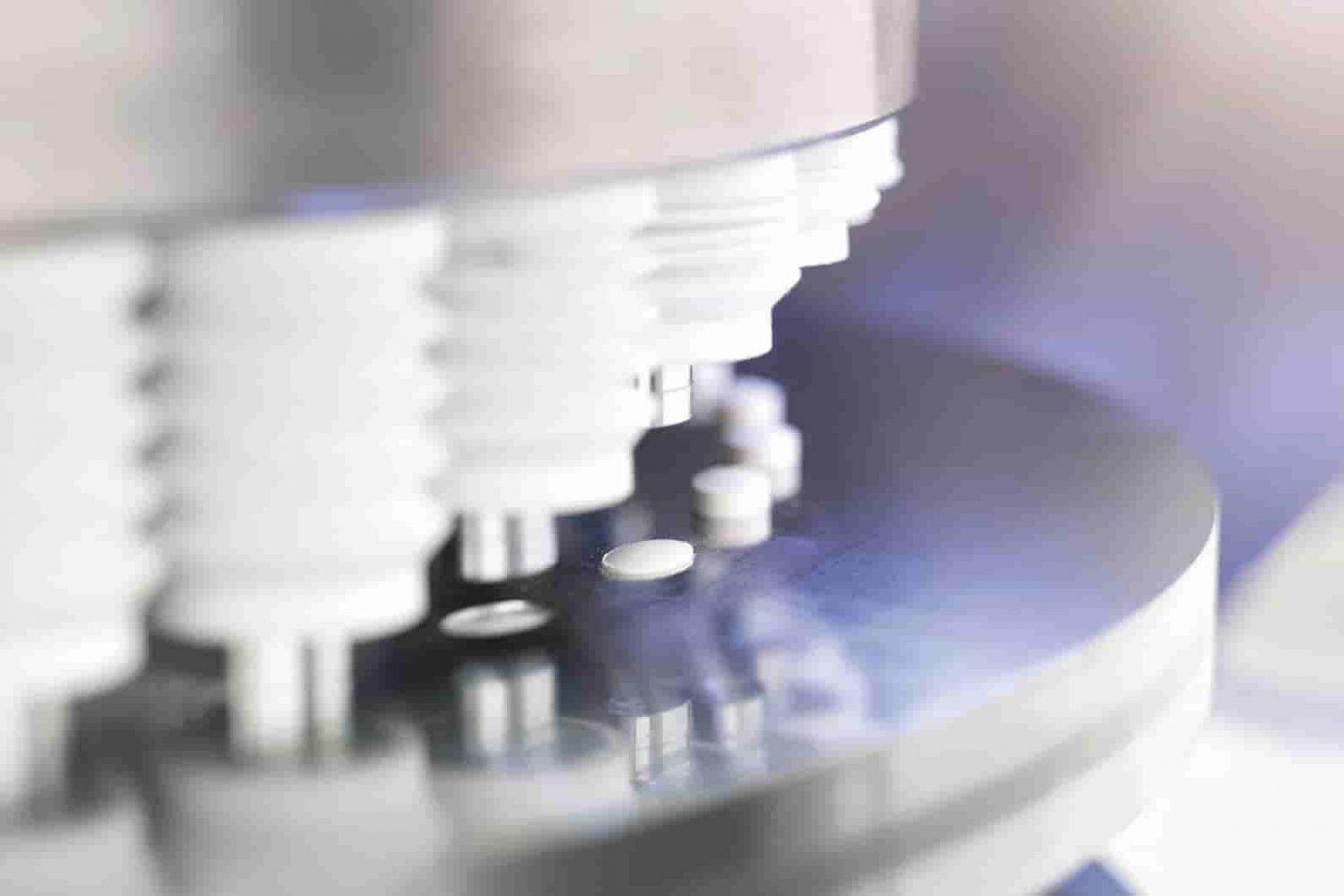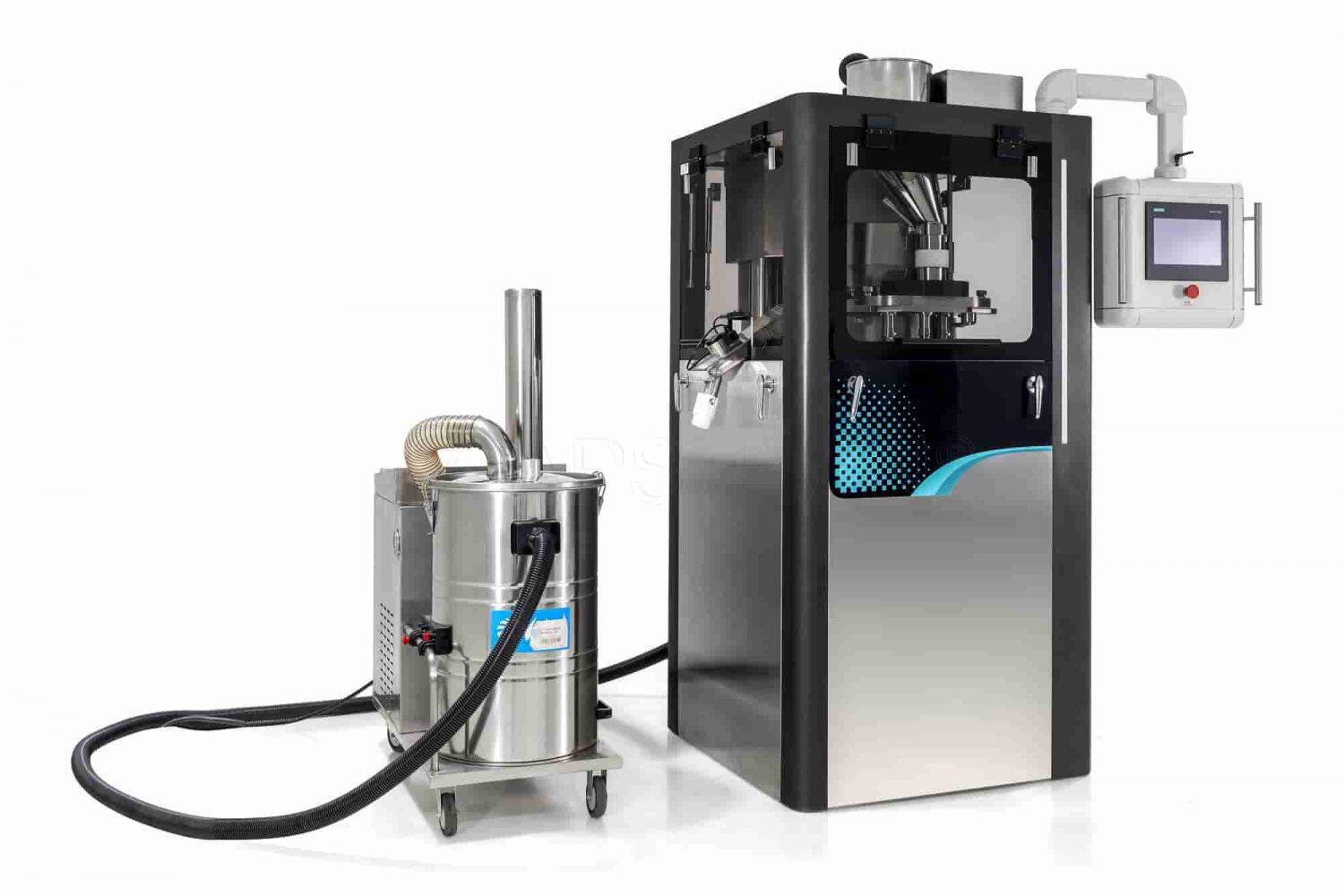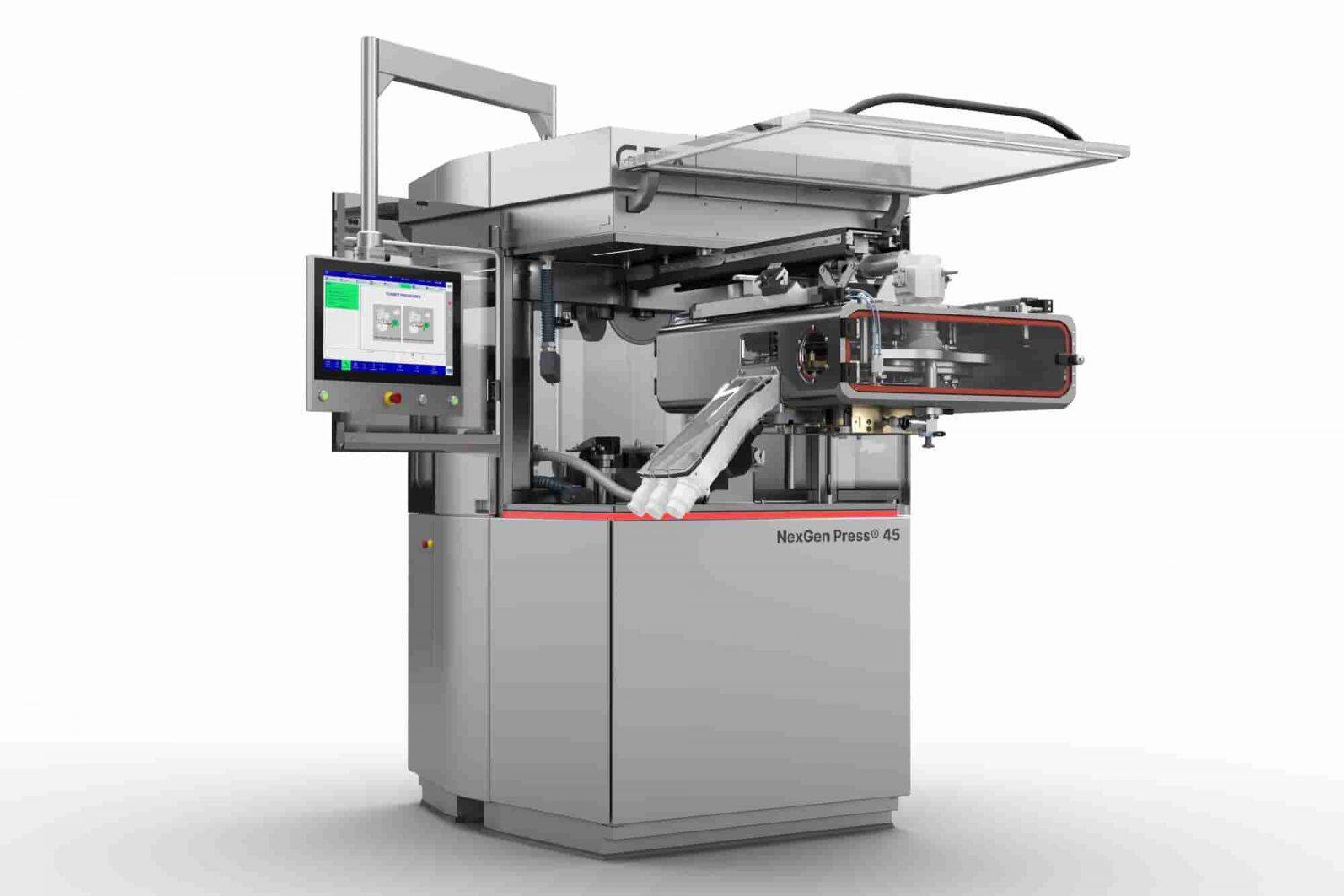
Thinking about adding tablet manufacturing to your business? Then you need a tablet press. But the market is full of different options. Not sure which tablet compression machine is right for you? You're in the right place.
In this guide, we'll break down the main categories of tablet presses in simple terms. Whether you're a small supplement startup or a global pharma manufacturer, understanding each machine's key features, pros and cons, and typical use cases will help you make a smart buying choice. Let's dive in and explore together!
Why Do You Need A Tablet Compression Machine?
A tablet compression machine is what you need to turn powder into solid tablets. Whether you're making medicine, vitamins, or other supplements, you can't just scoop powder into a bottle. It has to be pressed into consistent, easy-to-swallow tablets.

Here's why a tablet compression machine matters:
- It shapes your product. No press means no tablets—just piles of powder. The machine compresses the powder into a firm, clean shape that holds together.
- It ensures the right dose. Every tablet has to contain a consistent dose of the active ingredient. You can count on a tablet press to maintain uniformity across all batches.
- It saves time and labor. Pressing tablets by hand (yes, that's possible with basic tools) is slow and inconsistent. A tablet press speeds things up. With it, you can have from a few hundred to thousands of tablets per hour.
- It boosts quality. Tablets made by compression machines are firm, smooth, and don't break easily. Plus, you can adjust hardness, thickness, and weight to match your formula and needs.
- It supports scale. If your business is growing, a tablet compression machine helps you keep up with demand. You can start small and scale up to high-speed machines as orders grow.
In short, you need a tablet compression machine to make tablets that are safe, consistent, and ready for market. Whether it's five hundred or five million pills, this machine does the job—quickly, cleanly, and reliably.
Types of Tablet Compression Machines
So, what kinds of tablet presses are out there? It's not a one-size-fits-all situation. From small manual presses to high-speed giants, each type has its own job to do. Let's take a quick tour!
Single-Punch Tablet Press (Single Station)
A single-punch tablet press is the entry-level option. You might hear it called a single-station or eccentric press—it compresses one tablet at a time using just one die and two punches.
So, this type is perfect for small-scale tablet production, like R&D labs, compounding pharmacies, or boutique supplement makers. In fact, many R&D teams rely on single-punch presses to test new formulations because they're low-cost and easy to operate. Popular bench-top models can produce a few thousand tablets per hour at most.
Key Features:
- Compact size, often manually operated or motorized.
- One set of punch and die tools.
- Low throughput (typically a few thousand tablets/hour).
- Pros:
- Simple design and easy to use, perfect if you're just getting started.
- Budget-friendly both in terms of buying and maintenance.
- Minimal setup required, so you can get going fast.
- Great for low-volume production, formulation tweaks, or making custom tablets.
- Offers fine control over each tablet, plus quick changeovers when you need to switch shapes or formulas.
- Cons:
- Low output—it makes just one tablet at a time, so it's not built for big production runs.
- Doesn't come with fancy automation; you might need to feed powder manually or turn a crank on simpler models.
- Because it's slower, labor costs per tablet can get high if you're trying to produce in bulk.
Use Cases:
- Ideal for R&D and pilot-scale production.
- Perfect for making custom supplements.
- A solid choice for pharmacies testing out a new vitamin formula.
- Also useful for training, teaching, or emergency use when you need to press tablets quickly without complex equipment.
Rotary Tablet Press (Multi-Station)
The rotary tablet press is the workhorse of tablet manufacturing. Often called a multi-station press, it uses a rotating turret with multiple tooling stations (sets of punches and dies) to compress many tablets with each rotation.
This design dramatically boosts throughput: even mid-range rotary presses can make tens of thousands of tablets per hour. In fact, rotary press speeds can range roughly from 20,000 up to 900,000 tablets per hour on advanced models, making them ideal for mass production. It's no surprise that rotary presses are the most widely used type in pharmaceutical and nutraceutical factories.
Key Features:
- Multiple punch stations on a spinning turret.
- Continuous filling, compression, and ejection in one cycle.
- Many models have features like automatic powder feeding, thickness control, and tablet hardness monitoring.
- Pros:
- Delivers high efficiency and output.
- Offers strong precision and tablet consistency.
- Automation is often built-in, like touch-screen controls and auto-lubrication.
- Versatile tooling makes it easy to switch up tablet shapes by swapping punch dies.
- Cons:
- More complex than single-punch machines.
- Requires skilled setup and regular maintenance.
- Comes with a bigger price tag upfront and takes up more floor space.
- Troubleshooting can get tricky.
- Maintenance costs and spare parts add up faster compared to simpler machines.
Use Cases:
- Ideal for mid-sized to large supplement and pharmaceutical companies to crank out massive volumes of tablets.
- Great for high-demand products like pain relievers, multivitamins, or dietary supplements.
- Commonly used by contract manufacturing organizations (CMOs) handling big tablet orders for multiple clients.
- A go-to upgrade for any business that wants to grow fast.
High-Speed Rotary Press (Double-Sided & Multi-Tip)
These tablet compression machines are essentially advanced rotary presses engineered for extreme output and automation. They often have double-sided turrets (compression on both sides of the wheel) or multiple punches (multi-tip) per station to crank up the tablet output.

Some high-speed machines can produce hundreds of thousands of tablets per hour, even approaching a million tablets/hour using multi-tip tooling. These machines are equipped with the latest tech to keep everything running smoothly at such high speeds.

Key Features:
- Built for speed with a high-speed, dual-sided turret system.
- Features both pre- and main compression rollers for smooth tablet formation.
- Can include multi-tip punches to multiply output.
- Advanced control systems for auto weight adjustment, defect rejection, and data logging.
- Pros:
- Built for the biggest manufacturers.
- Cuts labor costs by automating most tasks.
- Delivers reliable quality thanks to built-in features.
- Minimizes material loss by accurate feeding and controlled compression.
- Often includes in-line testers to monitor hardness and weight in real-time.
- Cons:
- Very expensive to buy and set up.
- Needs skilled technicians to operate and maintain.
- Changeovers between products can take time due to the advanced setup.
- Not every powder works well at high speeds.
- Overkill for small batches.
Use Cases:
- Used by big brands that supply tablets to global markets.
- Perfect for producing millions of tablets monthly.
- Common in contract manufacturing sites focused on high-output, low-cost production.
Multi-Layer Tablet Press (Bilayer & Specialty Presses)
Not all tablets are just one homogeneous mix. Some have multiple layers or components. Multi-layer tablet presses are designed to produce tablets with two or more clearly defined layers. That's why they are sometimes called bilayer or trilayer presses.

(Image Source: GEA)
These types of tablet compression machines have separate feeders for each layer of powder and compress them in order. The press is a go-to choice for producing controlled-release or combination pills.
Key Features:
- Similar to a rotary press but with multiple fill stations for different layers.
- For a bilayer tablet, the turret will go through two filling stages and usually two compression stages.
- Often includes built-in sensors and cameras to keep every tablet accurate.
- The compression timing is precisely synchronized so layers bond firmly.
- Pros:
- Perfect for making combo tablets where the actives need to stay apart.
- Great for innovative ideas like day/night combo pills with different meds in each layer.
- Modern machines still offer good speed.
- High automation helps manage the synchronized layering process smoothly.
- Cons:
- More complex and pricier than standard rotary presses.
- If the formulation isn't right, layers might separate later.
- Needs to fine-tune each layer's thickness and compression.
- The output is usually a bit lower than that of single-layer machines of similar size.
- Only worth it if you need layering.
Use Cases:
- Useful for pills with different release timings, such as one fast-acting and one slow-release dose.
- Nutraceutical companies may use it to keep incompatible ingredients separate in one tablet.
- If you don't need layered tablets, it's usually better to stick with a standard rotary press.
Comparing Different Tablet Press Types
To help with your decision-making, here's a quick comparison table summarizing the key attributes of each tablet compression machine type discussed above:
| Tablet Press Type | Output Capacity | Automation Level | Typical Cost | Ideal Use Case |
| Single-Punch Press | Low (a few thousand tablets/hour) | Low – often manual or basic motor drive | Low (budget-friendly) | R&D labs, small-batch production, startups |
| Rotary Press | High (tens of thousands/hour) | Medium to High – many automated features | Medium to High | Mass production in pharma/nutraceuticals, growing companies |
| High-Speed Rotary | Very High (hundreds of thousands/hour) | Very High – fully automated, computer-controlled | Very High (major investment) | Large-scale manufacturing, high-volume drug or vitamin production |
| Multi-Layer Press | High (tens of thousands/hour, slightly lower than single-layer) | High – precise multi-feeder control | High (specialized) | Layered or combo tablets, controlled-release products, advanced pharma applications |
(Note: "Typical Cost" is relative. For example, single-punch presses might be thousands of dollars, whereas high-speed presses can be hundreds of thousands. Actual prices vary by brand and specs.)
FAQs on Types of Tablet Compression Machines
Q: What are the differences between single-punch and rotary tablet presses?
A: A single-punch press uses one station to make one tablet per cycle. A rotary tablet press has many stations on a rotating wheel, making multiple tablets at once. Need to produce tablets fast and in bulk? Go with a rotary press. Just making small batches? A single-punch machine is a cost-effective option.
Q: How many tablets per hour can a high-speed tablet press produce?
A: High-speed tablet compression machines can produce anywhere from around 100,000 to over 500,000 tablets per hour. The output of an advanced model from Huada Pharma even approaches 675,000 tablets/hour in optimal conditions.
Q: Is it possible to make multi-layer tablets with a rotary tablet press?
A: Standard rotary presses produce single-layer tablets. To make bilayer or trilayer tablets, you need a multi-layer tablet press or a rotary press specifically equipped for layering. These special presses have multiple filling stations and compression steps to add each layer. Just a heads-up: some standard models can be modified. Don't forget to check with your supplier!
Q: What should I look for when choosing a tablet compression machine?
A: Key factors include your production volume, tablet size/shape, budget, and level of automation needed. Low output? Stick with a single-punch press. High output? You'll want the speed and power of a rotary or high-speed press. Also consider the complexity of your tablets (single layer vs. multi-layer), available technical expertise (automated machines require skilled operators), and maintenance support. Beginners should start with a reliable, easy-to-operate machine and ensure the manufacturer offers good training and after-sales service.